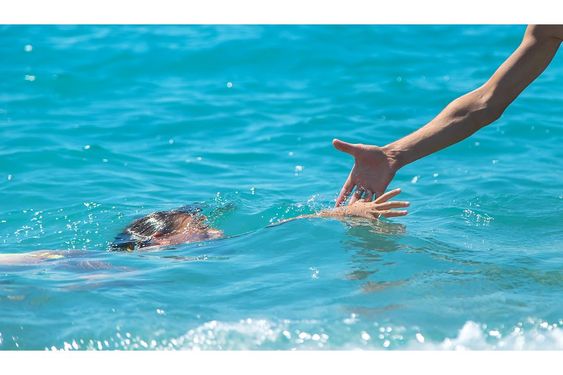
As parents, we take every precaution to protect our children, yet common misconceptions about water safety can give a false sense of security. Drowning is a leading cause of unintentional death among children under 5, but with the right knowledge, many of these tragedies can be prevented.
In this article, we’re debunking five dangerous myths that many parents hold about drowning. Understanding the truth could save a child’s life.
Myth 1: “I’ll hear my child if they’re in trouble.”
The Reality: Drowning is often silent.
In movies, drowning is depicted with splashing, screaming, and flailing, but in reality, it’s a silent and swift event. A drowning child typically cannot cry out or wave their arms because their body instinctively focuses on breathing. Children can disappear underwater quietly, and drowning can occur in as little as 30 seconds.
Always keep your child in sight near any water source. Continuous, undistracted monitoring is essential.In a recent podcast episode with Associate Professor Colleen Saunders, a drowning prevention expert from the University of Cape Town, she emphasised, “Drowning is a silent emergency, and every parent needs to understand the importance of undivided attention around water.”
Myth 2: “Shallow water is safe.”
The Truth: Drowning can happen in just a few inches of water.
As little as two inches of water can pose a drowning risk for a child. Kiddie pools, bathtubs, and even buckets can be dangerous. Young children, particularly toddlers, lack the strength and motor skills to lift themselves out if they fall face down.
What to Do:
Always keep your child within arm’s reach, even in shallow water. After use, promptly empty buckets, bathtubs, and kiddie pools.
Myth 3: “Swimming lessons make my child drown-proof.”
The Reality: Even experienced swimmers can drown.
Swimming lessons are valuable but not a guarantee of safety. Children may panic, become fatigued, or encounter unexpected water conditions. Water safety education should extend beyond basic swimming to include survival skills, such as floating and knowing how to exit the pool.
What to Do:
Stay vigilant, even if your child knows how to swim. Teach them about water risks and survival techniques like floating and holding onto the pool’s edge. In Parenting Safety First, a podcast series, Professor Saunders recommended, “Swimming skills are essential, but real protection comes from supervision and water awareness.”
Myth 4: “If there are other adults around, my child is safe.”
The Fact: Clear responsibility for supervision is essential.
In group settings, it’s easy to assume someone else is watching, leading to a situation where no one is actually paying attention—this is known as the “bystander effect.”
What to Do:
In any group setting, assign a specific “water watcher” and ensure they remain alert. Rotate every 15-30 minutes to avoid fatigue, ensuring the designated adult is sober and attentive.
Myth 5: “Drowning only happens in pools and oceans.”
The Reality: Drowning can happen in any body of water.
While we often imagine drowning happening in pools or oceans, it can happen in any water source, including bathtubs, fountains, and even buckets. Young children are particularly at risk due to their curiosity.
What to Do:
Monitor children near any water source and secure any accessible water sources around the home.
Professor Saunders highlighted in the podcast the risks posed by stored water in the home: “During the Western Cape drought, families stored water in open containers, which sadly led to drowning incidents among young children. Awareness and securing open water sources around the home are vital.”
In Conclusion: Drowning is Preventable
Drowning is fast, silent, and can occur in unexpected places. By debunking these myths and staying vigilant, we can reduce risks and keep children safe. Prevention is crucial—never leave your child unattended around water, even for a few moments.
Take Action Now:
– Enrol your child in water safety and survival classes.
– Learn CPR to be prepared for emergencies.
– Remember: Constant supervision and safety education are the best defences against drowning.
For more water safety tips, tune into our podcast for expert insights. Together, let’s ensure that no child faces the risk of drowning.
Stay Safe,
The Child Safe South Africa Team

